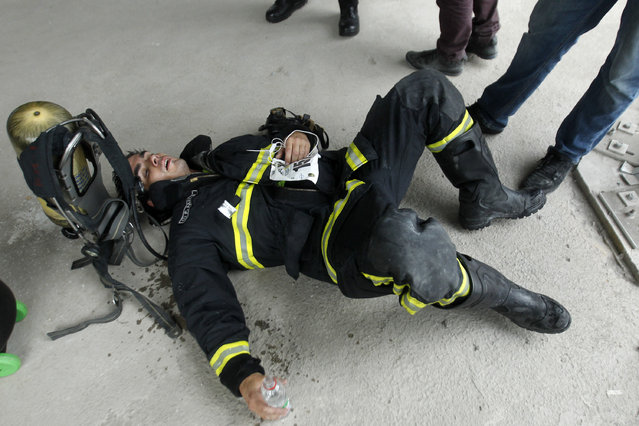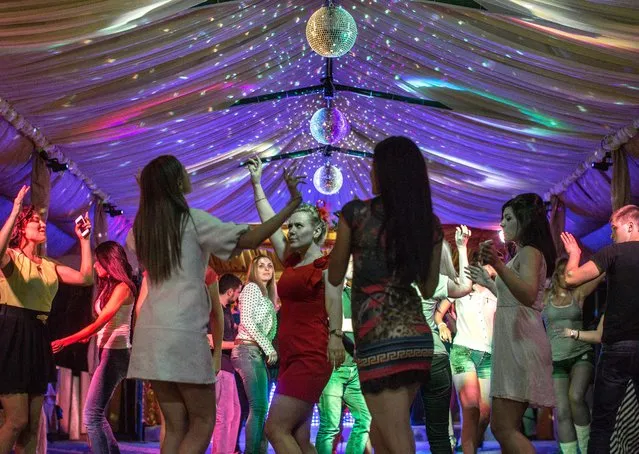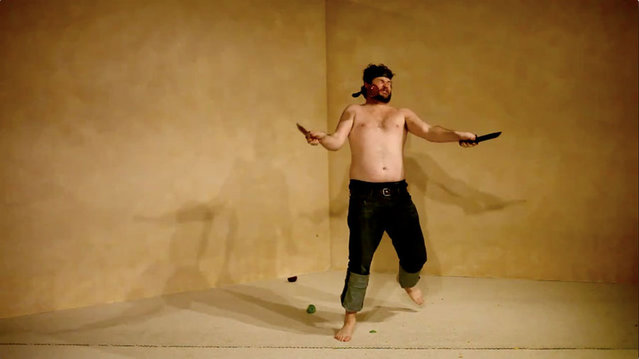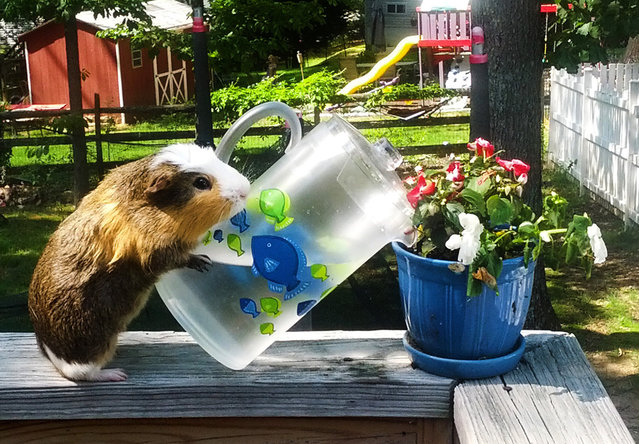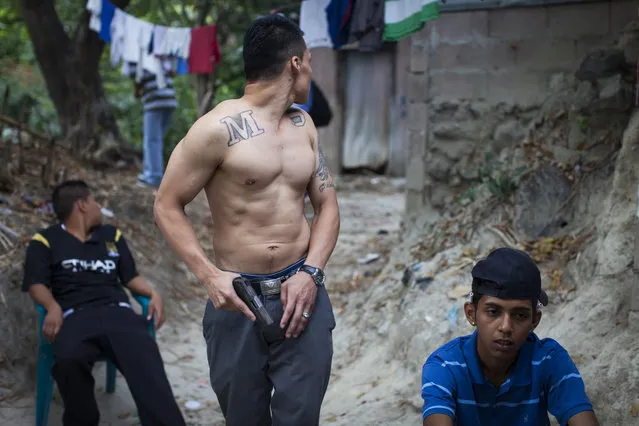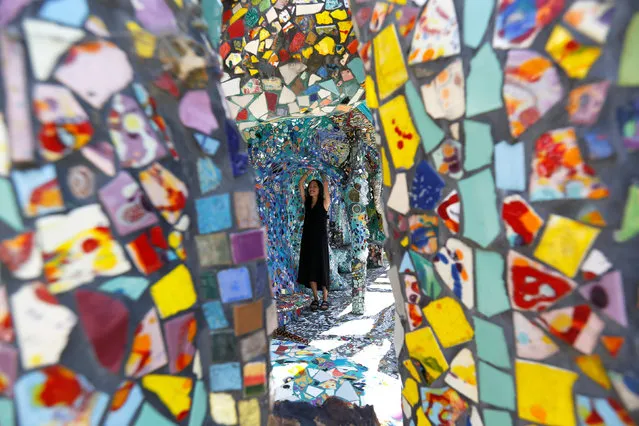
A visitor views the work of artists Gonzalo Duran and Cheri Pann at their Mosaic Tile House in Venice, California U.S., August 26, 2016. With an array of thrift store china, humorous souvenirs and handmade tile adorning its walls and floors, the Mosaic Tile House in Venice stands as a monument to two decades of artistic collaboration between Cheri Pann and husband Gonzalo Duran. (Photo by Mario Anzuoni/Reuters)
29 Sep 2016 09:13:00,post received
0 comments

